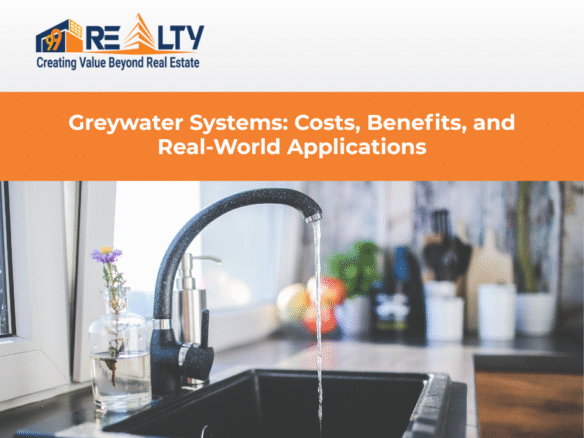For decades, property has been the poster child of safe investing in India. Parents advised it, relatives bragged about it, and Bollywood glamorized it. But here’s the hard truth: just because something’s expensive doesn’t mean it’s profitable. In fact, your biggest investment might turn out to be your worst financial advisor—especially if you’re buying in the wrong place.
So before you sign that cheque, let’s decode where not to put your money.
Bollywood’s Mansion Sales: Panic or Power Play Strategy?
The Illusion of “Property = Profit” in India
Cultural Obsession with Real Estate
Indians treat real estate like gold. It’s seen as a rite of passage—owning land or a flat somehow validates success. But we forget one critical thing: property is not liquid, and in the wrong location, it can bleed your finances for years.
Rise of First-Time Buyers & Emotional Traps
Post-COVID, a lot of millennials and NRIs jumped into the market without research. They followed trends, not facts. Bought in hype zones, not demand zones. And now? Many are stuck with properties they can’t rent, sell, or even live in.
Red Flags: When Property Becomes a Liability
Low Rental Yield
If your 1 crore flat is giving you ₹15,000/month in rent, you’re looking at a rental yield of 1.8%. That’s lower than a fixed deposit. Now imagine EMIs, maintenance, and property tax on top.
Demystifying Maintenance Charges on Flats: What Every Homebuyer Should Know
Oversupply in Certain Zones
Just because 10 towers are coming up doesn’t mean 10,000 families will move in. Many investors fall for the “growth potential” trap, ignoring the fact that demand might be years away—or never arrive.
Poor Infrastructure and Connectivity
If it takes 2 hours to get to work or the nearest hospital is 15 km away, guess what? Nobody wants to live there. Location isn’t just about pin codes—it’s about livability.
Legal Disputes and Title Issues
From illegal construction to disputed land titles, shady builders are a dime a dozen. A property stuck in legal limbo isn’t just useless—it’s dangerous!
Where Not to Buy Property in India (2025 Edition)
Here’s a reality check list of property markets to avoid—backed by data and insider insight.
1. Places with All Hype, Little Return
Poor Livability Score, Areas with Excessive Inventory or “Too Many Towers, Not Enough Tenants” Problem
Massive residential clusters may look like booming zones—but if the supply far exceeds actual demand, you’ll see poor rental yields, low occupancy, and delayed appreciation. A project with 30 towers and only 20% occupancy is a red flag in disguise.
Look beyond brochure images. Check if there are:
- Schools, hospitals, and grocery stores nearby
- Functional roads and public transport
- Reliable water, power, and internet supply
If these basics are missing, it’s not just inconvenient—it’s financially risky. Tenants won’t stay. Buyers won’t buy.
2. Projects in Regulatory or Legal Grey Zones
Land Titles, RERA Delays, and More
Some areas, especially on city fringes, have a history of:
- Unclear land titles
- Non-RERA-registered builders
- Construction violations
These lead to project halts, buyer disputes, and losses that can take years to recover from. Always verify the paperwork, even if the builder has a flashy brand.
Benefits of the RERA Act for Homebuyers
3. Zones Dependent on a Single Mega-Project
The “If and When” Risk Factor
Some zones hinge entirely on a promised airport, IT park, or industrial corridor. But what if it’s delayed… or worse, never happens due to Political turmoil like topple of Government or Regional Disputes.
Buying in such areas is like betting all your money on one stock. Diversification and grounded realistic research are key.
4. Hill Stations Turned “Investment Traps”
Weather Woes and Regulatory Crackdowns
At first glance, buying a second home in a picturesque hill station seems like a dream come true. Crisp air, scenic views, and peace far from city chaos—it’s everything we crave. But beneath that charm lies a growing number of real estate red flags.
Many hill towns are now grappling with frequent natural disruptions, including landslides, flash floods, and road blockages. Global warming and Climate change has intensified these events, turning what were once rare occurrences into regular headaches. Add to this the increasingly stringent environmental norms being enforced by state governments and NGT (National Green Tribunal) bodies—new construction projects often face delays, restrictions, or outright bans to protect fragile ecosystems.
Then comes the infrastructure challenge. Limited water supply, seasonal electricity cuts, poor waste management, and strained healthcare facilities make many of these areas inhospitable for year-round living. The result? High maintenance, low rental demand, and difficulty in resale.
Unless you plan to retire and live there full-time, investing in a holiday home in a hill station today can be more emotional than practical. What looks like a peaceful investment might end up being an expensive weekend ghost home—earning nothing cause earning will go to maintenance and salaries, appreciating little, and demanding more than it gives back.
Before investing in any hill station property, check the local municipal development plans, environmental restrictions, and seasonal accessibility reports. If a location faces regular weather-related disruptions or has construction bans in place, your dream home might stay vacant—and your investment frozen.
The Investor’s Illusion: Low Rental Yields and False Promises
Rental Yields vs. Real Returns
If you’re buying for passive income, focus on rental yield. A property worth ₹1 crore that earns ₹10,000/month gives a return of just 1.2% annually—before tax, maintenance, and interest. You could do better with a debt mutual fund.
Beware of “Hot Markets” That Are Too Cold Inside
Just because a zone is trending doesn’t mean it’s worth it. Many buyers jump into “buzzing” areas where actual footfall, livability, and infrastructure are still catching up. Remember: headlines don’t pay EMIs.
The NRI and Long-Distance Buyer Trap
Emotional Attachments Driving Financial Decisions
NRIs often buy in their hometowns or in areas recommended by family, without evaluating real-world practicality. The result? Empty flats, difficult resale, and stuck capital.
Buying Without Visiting: A Costly Shortcut
Online buying and property selection might be convenient, but site visits matter. Photos can lie. Ground truth doesn’t. Always walk the site, check the surroundings, and talk to locals if possible.
How to Identify a Risky Property Investment
Red Flags to Watch for
- Too-good-to-be-true prices
- Freebies like “modular kitchen + gold coin”
- No clear completion date
- Low pre-booking rates
- Unrealistic payment plans
If something feels off—it probably is.
Do Your Ground Reality Checks
Go beyond ads. Look at:
- Past projects by the builder
- Reviews on forums and social media
- Local job market and rental trends
- Government master plans
Real estate is one field where the ground beneath your feet literally matters.
Smarter Alternatives to Maximize ROI
Diversify with REITs or Commercial Micro-Investments
Instead of locking ₹80 lakh in one flat, consider:
- REITs (Real Estate Investment Trusts)
- Co-working space shares
- Co-living or student housing opportunities
These offer better liquidity, lower risk, and often higher returns.
Choose Based on Utility, Not Hype
Whether you buy to live or invest, ask: Would I want to live here myself? If the answer is no, you’ve got your answer.
Final Word: Be Smart, Not Just Sentimental
Real estate isn’t just about property—it’s about people, purpose, and practicality.
If you’re buying to build wealth, don’t let tradition or peer pressure guide you. Let data, logic, and ground reality be your compass. Because your biggest investment should not become your biggest regret.
And if you ever feel unsure—remember, you don’t have to figure it out alone. That’s exactly why firms like 99 Realty exist: to help you make smart, sustainable, and strategic real estate decisions.
FAQs
1. What’s the minimum rental yield I should expect in a good property?
A decent residential property should yield around 3–4% annually. Anything below 2% could mean poor demand or overpricing.
2. Should I buy in an area that’s still developing?
Only if key infrastructure (roads, water, transport) is already functional or under final stages of completion. Don’t buy purely on promises.
3. Is investing in luxury properties a good idea?
Luxury doesn’t always equal profitability. They’re often hard to rent or resell unless located in prime, high-demand zones.
4. How do I verify if a property is legally sound?
Check if the project is RERA-registered, verify land titles, and consult a property lawyer. Don’t just rely on the builder’s word.
5. Can I trust online real estate portals blindly?
Use them for research, but never make final decisions based solely on listings. Visit the site, inspect documents, and consult experts like 99 Realty for due diligence.
Need Help?
Need help evaluating a property or planning your next move in the market?
Reach out to 99 REALTY – your trusted real estate partner for smarter choices.
Subscribe to get updates on our latest posts and market trends.






Join The Discussion